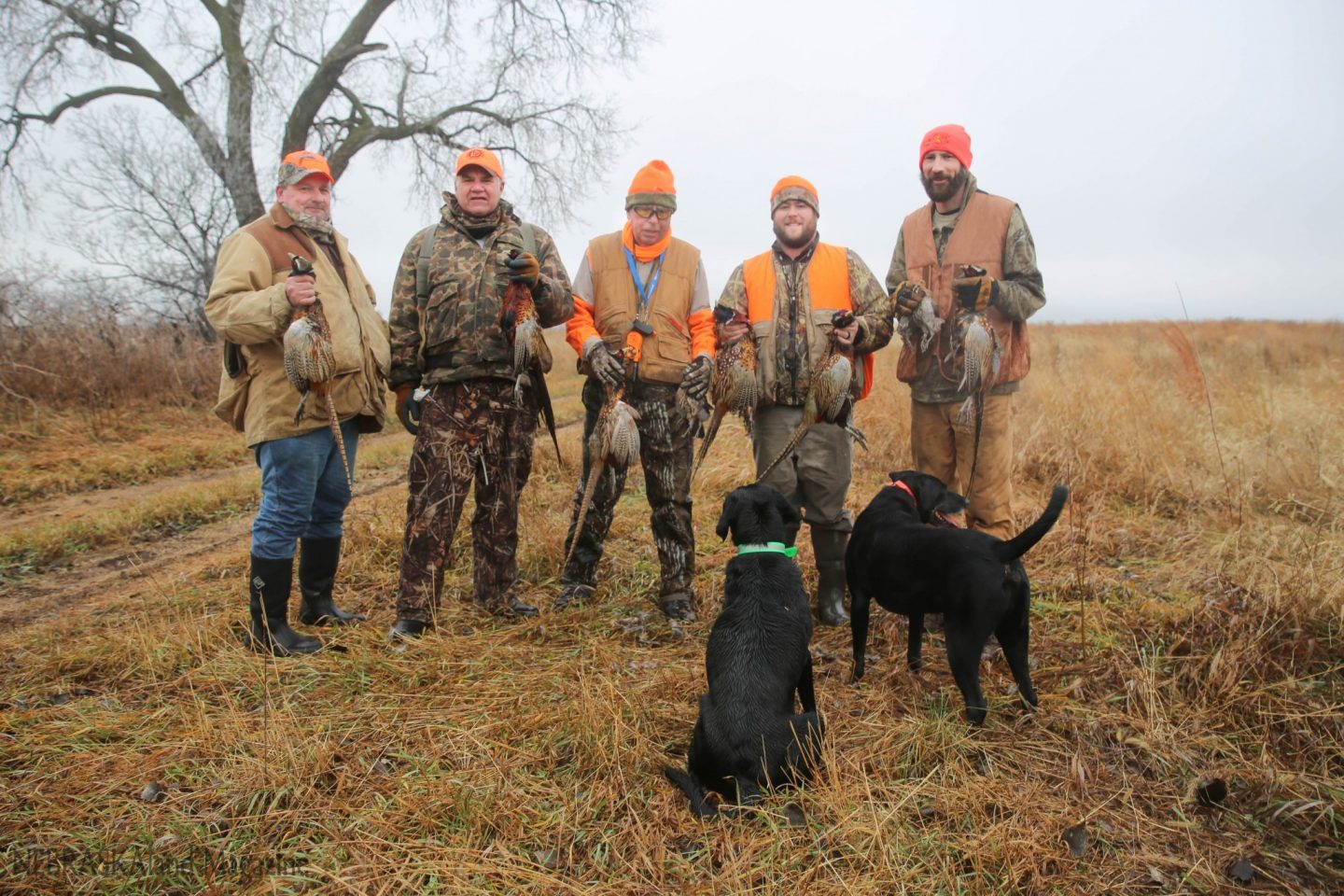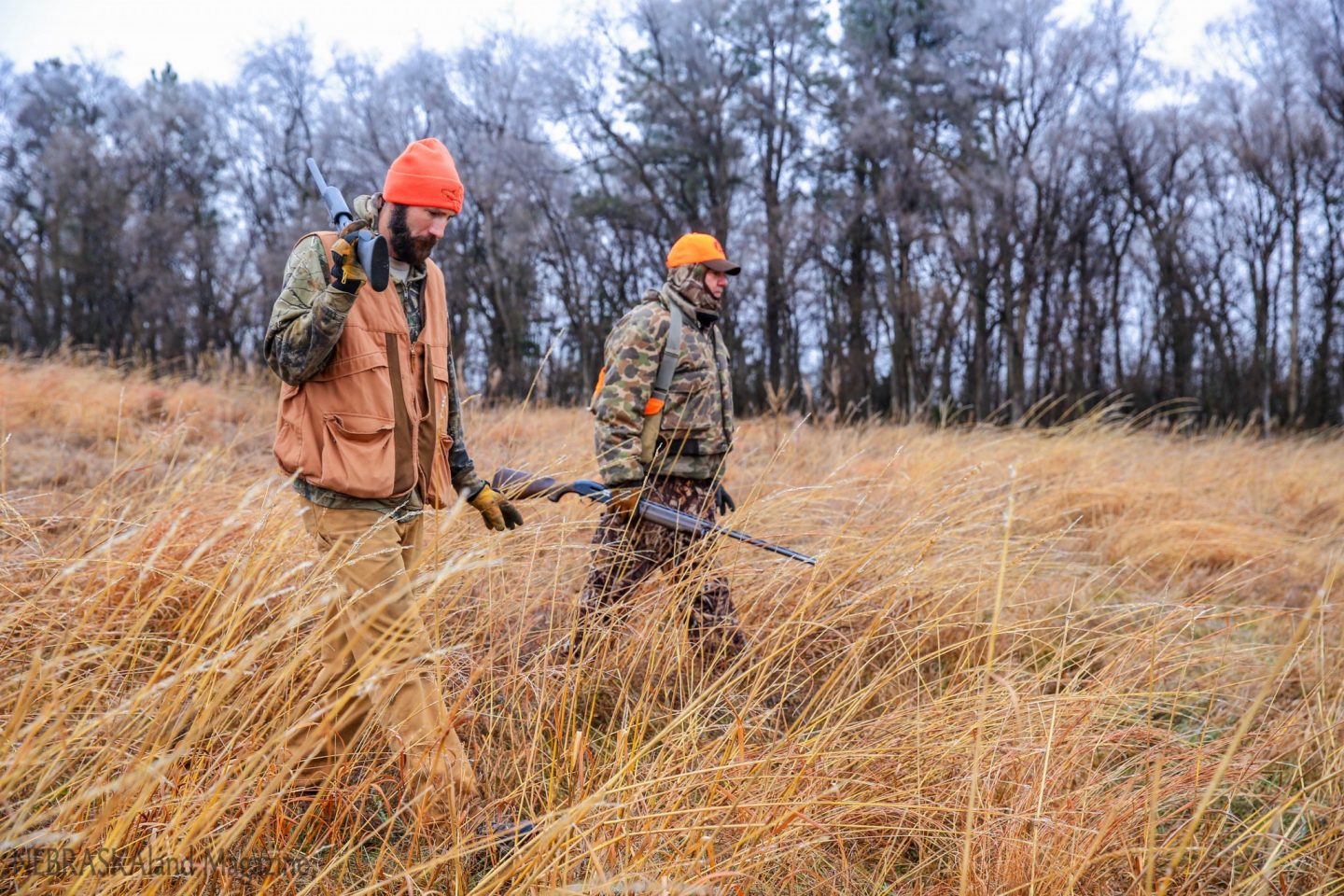
By Jenny Nguyen-Wheatley
Nebraska Game and Parks Commissioners and staff are in the midst of the Rooster Roundup — a quest to hunt pheasants on public land throughout Nebraska. The fourth stop on their journey is described below.
Commissioners Lynn Berggren and Bob Allen completed two days of upland hunting this afternoon in Antelope, Knox and Dixon counties. This was their fourth hunt during the Rooster Roundup, after leaving off at Davis Creek Wildlife Management Area (WMA) in late November. On Monday, Dec. 14, the Commissioners hunted at Grove Lake Wildlife Management Area near Royal, plus a couple conservation reserve program (CRP) fields nearby. On Tuesday, hunters visited Elk Point Bend WMA north of Ponca State Park.
The hunt was guided by wildlife biologists Scott Wessel, Lucas Negus and Josh Kounovsky on Monday at Grove Lake WMA. The sun never came out but hunters were glad that high winds never materialized. Not long into the hunt, they bumped into a cover of 30 quail but managed to shoot only one. The fields, plants and trees were encrusted with ice, which did make for interesting photos. A late-season hunt, the pheasants were unsurprisingly spooky and wary. Most birds were found in the thickest cover, hiding from the wind and ice. Many flushed out of reach toward the end of the fields.
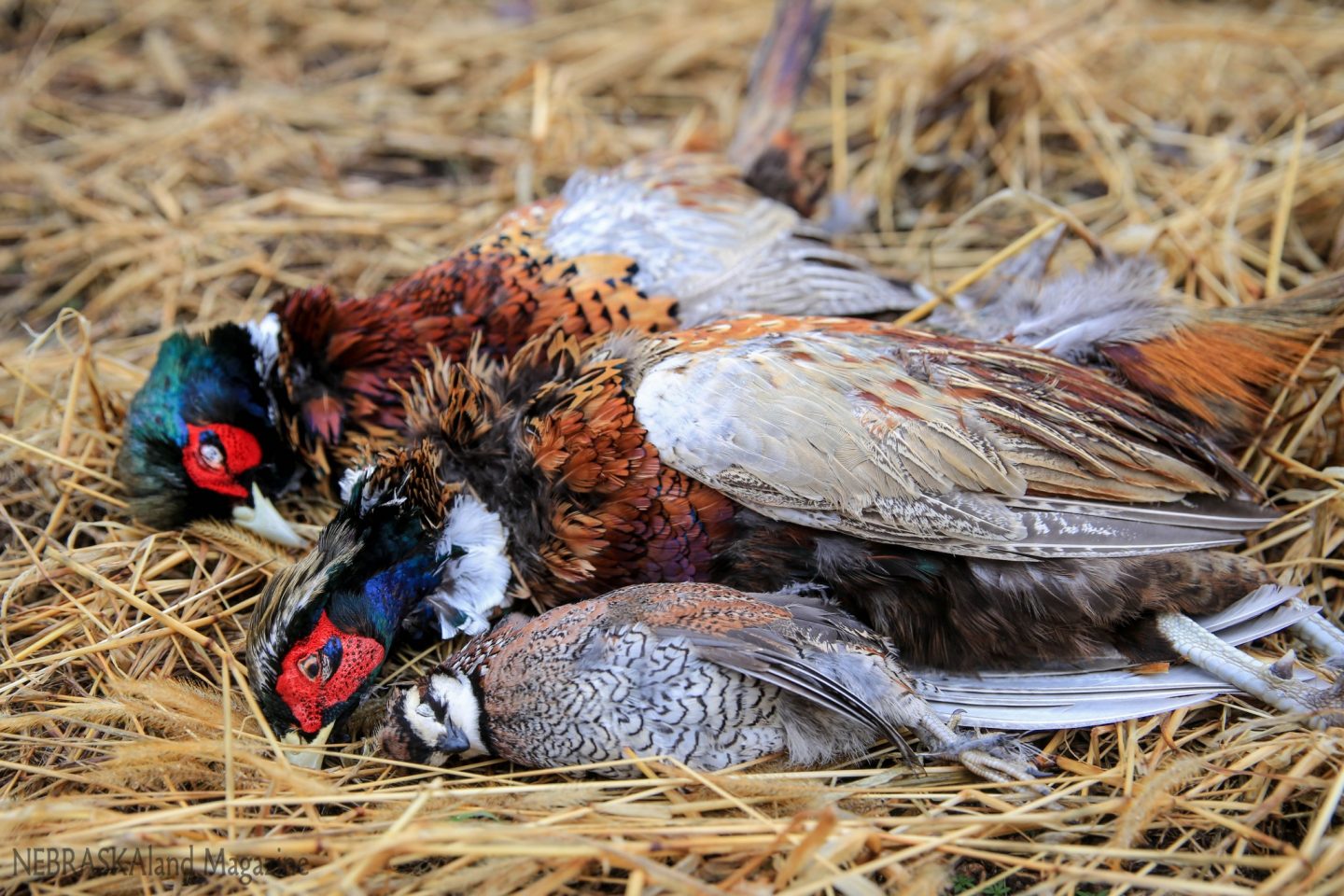
Hunters also had the opportunity to hunt two CRP fields nearby. They were beautifully managed. Commissioner Berggren said it was “the most amazing thing” he’s ever seen. The hunters shot six roosters and six quail total on Monday with the help of Commissioner Allen’s black Labrador retriever Moon and French Brittany Cate. Josh Kounovsky hunted with his black Lab Hutch. After hunting three fields, the wind picked up and the air became increasingly wet. They had been hunting for four hours at this point. Scott took the Commissioners to one more field to talk shop on management and habitat before heading out to Ponca State Park to stay the night. It was a good opportunity for Scott, Lucas and Josh to show the Commissioners what they’ve been working on.
For dinner, Scott prepared a delicious pheasant in white wine, tarragon and cream sauce dish, accompanied by baked asparagus and herb and garlic potatoes by me. Commissioner Allen shared a couple bottles of California wine. We enjoyed dinner in one of Ponca State Park’s mini-lodges.
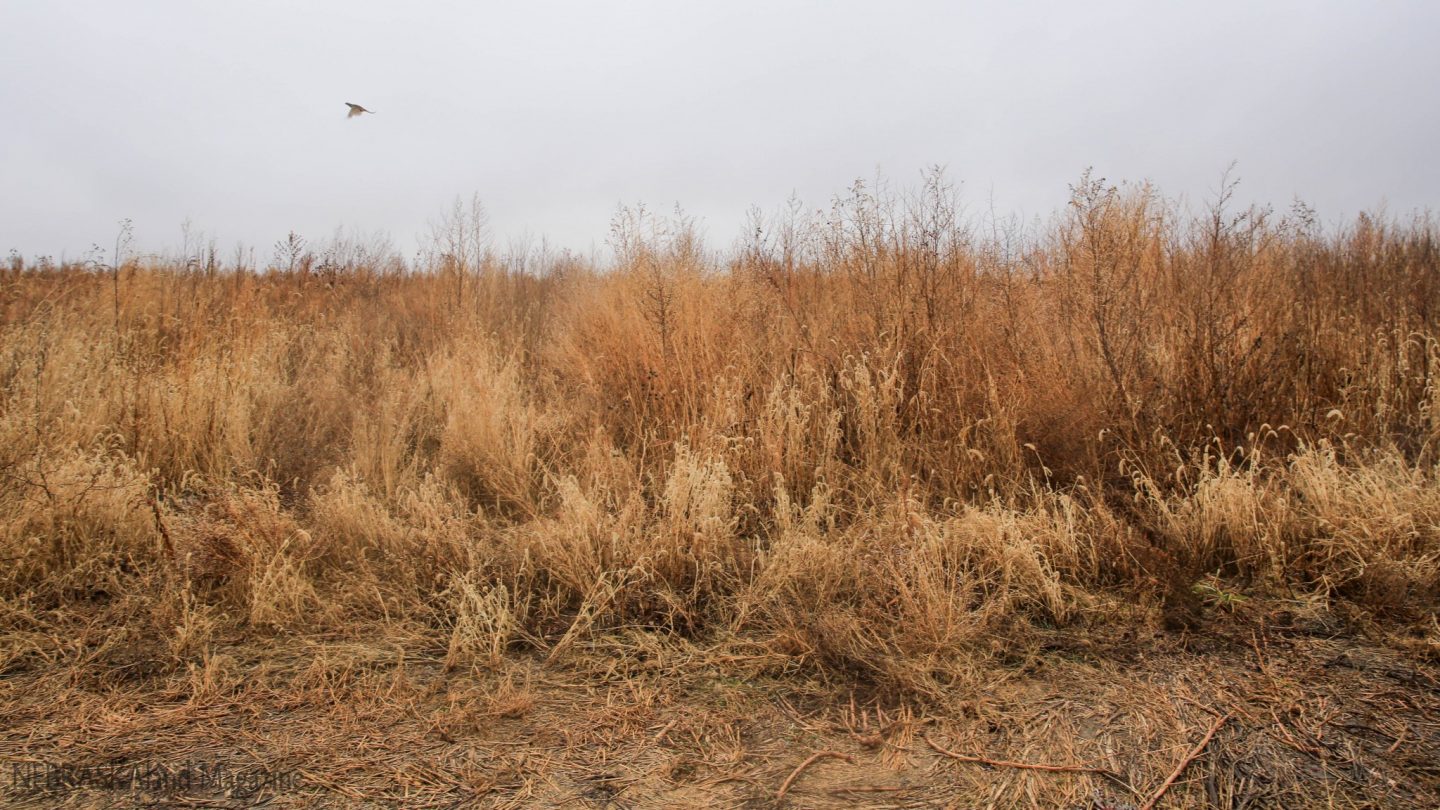
The next morning in Ponca was wetter and colder than the day before. After a breakfast of eggs and potatoes, hunters headed to Elk Point Bend WMA north of the park, which encompasses 1,600 acres. In 2014, the field where they hunted was cornfield. It was left idle for native prairie restoration. Now an early successional habitat, kochia, Russian thistle, sunflowers, hemp, and foxtail could be found there and the pheasants love it, said Scott.
The hunters shot four roosters and saw about 150 birds in the WMA.
“Every six feet, there’s a roosting site,” said Lynn. “There’s poop everywhere.”
What makes this pheasant habitat work?
“A big part of what makes this work is that there’s good overhead cover and there’s nothing underneath,” said Scott. “It’s a pain for short people and old fat men to walk through that stuff, but the pheasants can zip through underneath it. It’s like running through the buffet line because there’s good weed seed all over the ground.”
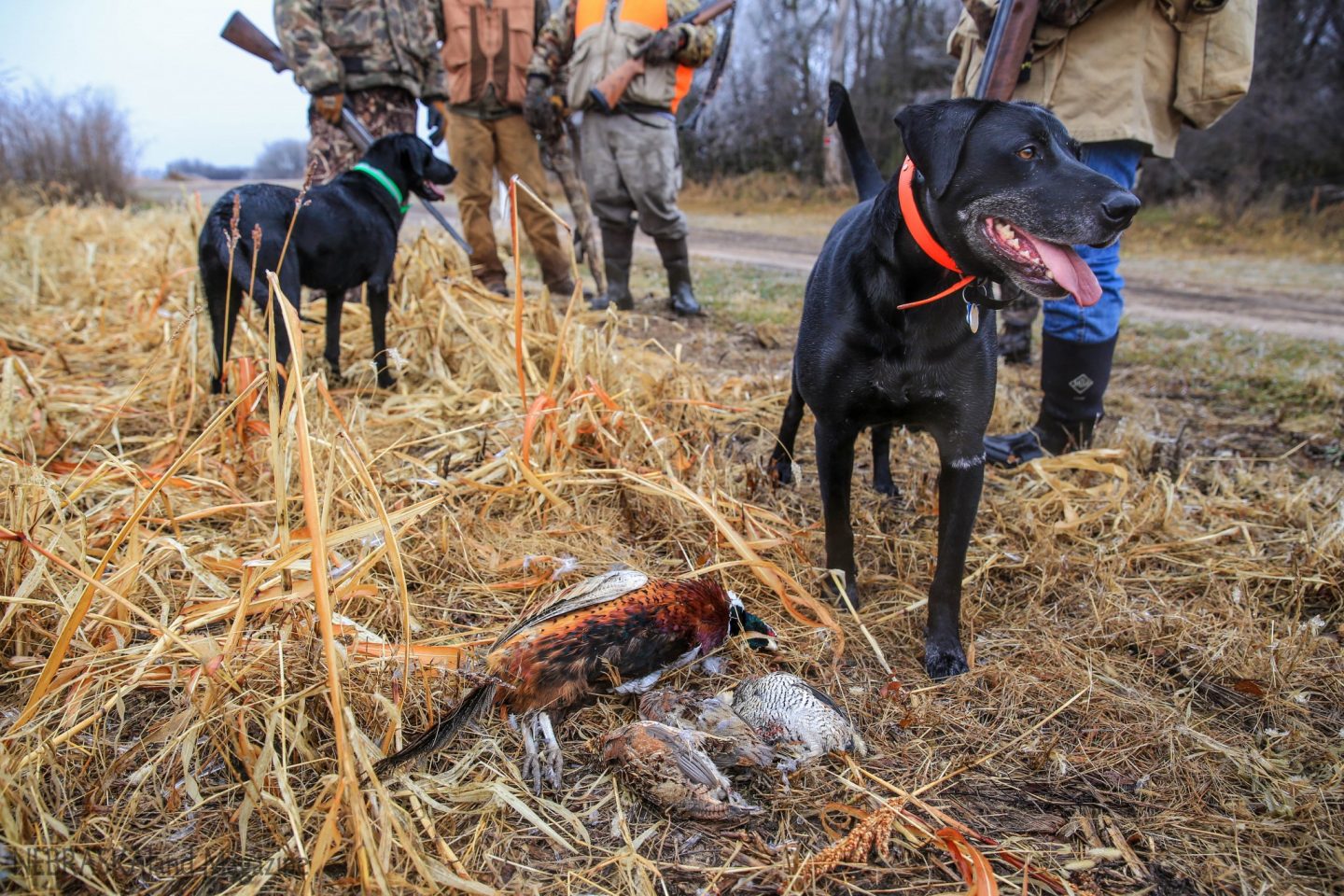
“Pheasants love kochia. Especially during this time of year, it provides good overhead cover for hawks,” Bob said. “Some varieties grow into a big bush and as a nickname they’re called “fireweed” because when the pioneers started out here, the fires would get going and just when the pioneers were about to put a fire out, the fireweed would roll through the prairie fire and go tumbling across the prairie and they had another prairie on fire. It made it nearly impossible for the pioneers to put prairie fires out because of the fireweed. That’s my story– I’m sticking to it until someone proves me wrong.”
Overall, the hunters were pleased with the number of birds and quality habitat seen at Grove Lake WMA and Elk Point Bend WMA.
